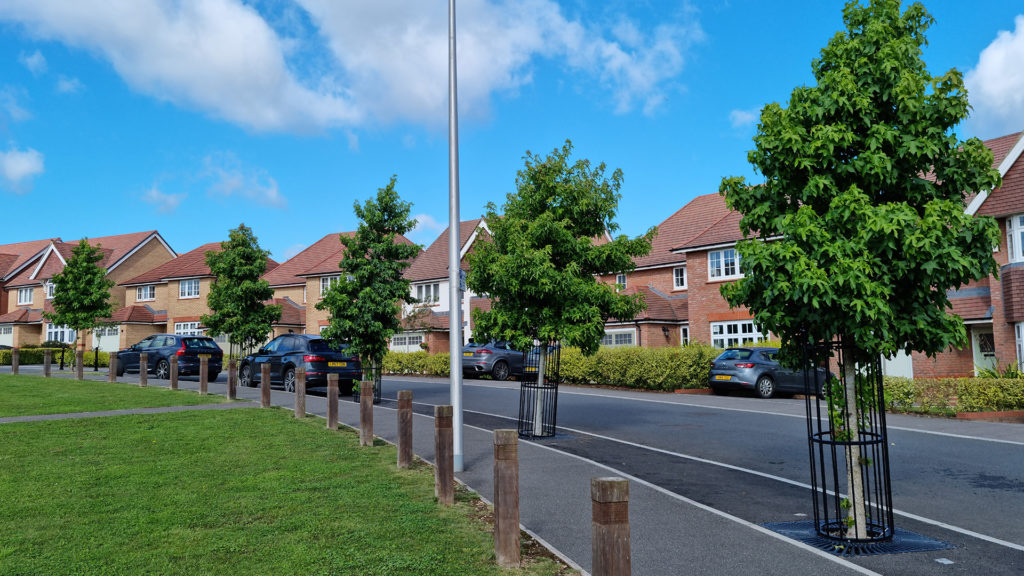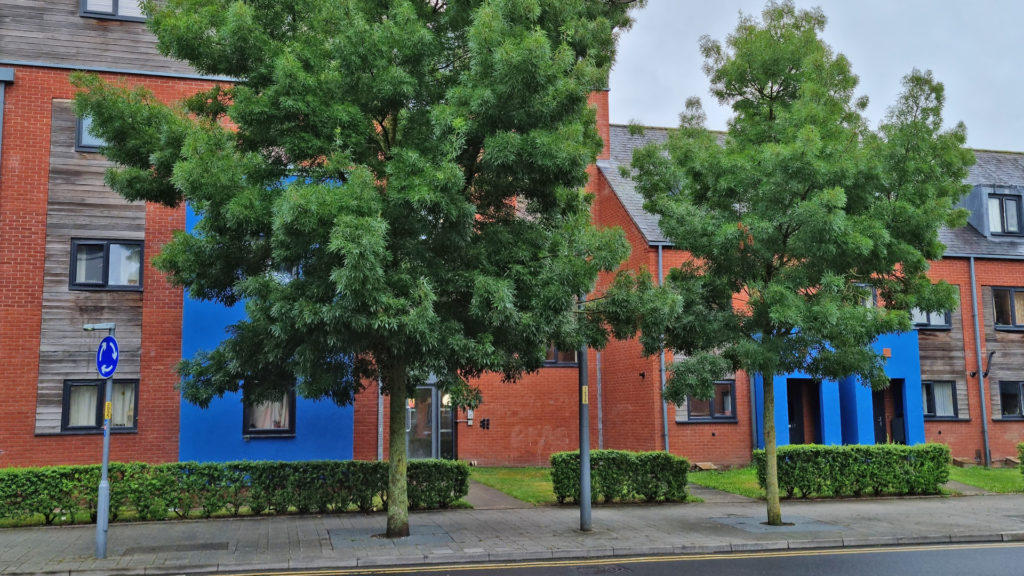In our previous blog – “Will we see tree-lined streets on all new developments?” – we highlighted the recent Planning for Future White paper – stating that all new streets should be tree-lined and all new homes to be carbon neutral by 2050.
Although great news, like others within the industry, we have challenged these aspirations, asking such questions as what defines a tree-lined street? How will they be planted? Hardscape or soft verge? at what size will they be planted? To what size will they grow and therefore be maintained? And what will the commuted sums be to enable local authority adoption?
GreenBlue Urban fully support the need for quality housing in quality surroundings, that is accessible for all. However, many details still require clarification to enable developers to plan effectively for sustainable green infrastructure from the outset.

A place is for living and it’s a joy to work with some developers whose ethos incorporates this – taking pride in providing sustainable developments with health and well-being at the forefront of their design. This can be done by providing well-designed open green spaces that bring communities together in a safe and sociable way; that also encourages walking and cycling and green corridors integrating nature and enhancing the landscape.
This is the most ambitious “green” investment we have ever seen, with pledges to make our nation cleaner, greener and more beautiful. We will all be watching the COP 26 Climate Change Conference in November with interest as the UK takes the lead on its promise to plant 30,000 hectares of trees as part of the England Tree Strategy, along with enhanced biodiversity as part of the Nature Strategy.

Is Biodiversity increasing?
Many developers are now employing dedicated specialists to handle their Biodiversity strategy, as highlighted in our recent webinar. This is, no doubt, to tackle the latest Biodiversity Net Gain (BNG) approach; a development that aims to leave the natural environment in a measurably better state of biodiversity than it was before.
GreenBlue Urban are delighted to see an increase in urban tree planting using the renowned ArborSystem, and the phenomenal interest expressed in the recently launched HydroPlanter – enabling cost-effective rain gardens to support SuDS across developments. However not all developers are yet taking the same approach, so will we start to see fewer properties vs more space?
Mandatory biodiversity was set out in the Environment Bill (2019 statement), however only applies to England, albeit likely to become law in 2023. The Bill states the following: –
- Minimum 10% gain required using the Biodiversity Metric
- Habitat to be secured for at least 30 years
- Habitat can be delivered on-site, off-site or via statutory credits
- Mitigation hierarchy still applies for avoidance, and then compensation for the loss.
The new Biodiversity Metric 3.0 was launched in July 2021 and will certainly help planners to assess changes in land development. But even with many helpful good-practice documents and webinars available for reference, clarity is still required to assist developers to take the lead. It is also important that local authorities fully understand the risks involved in not enforcing these legislative changes, without which resilient developments will not be built.

Whilst the industry waits for the forthcoming Environment Bill (Autumn 2021), GreenBlue will continue to support developers and planners to adopt a new approach for green infrastructure, to protect and enhance our environment for the good of all for generations to come.
